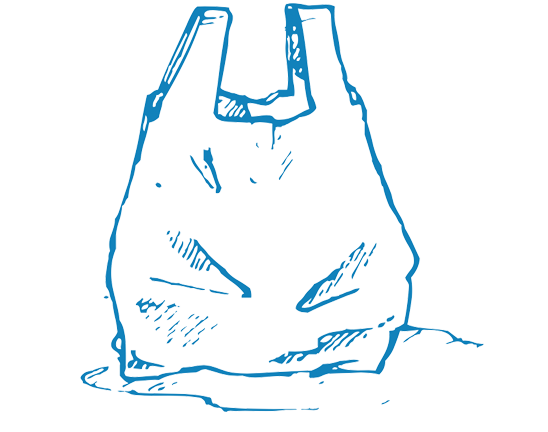Ending and Recovering from Marine Debris
The Problem
The ocean is downstream from everywhere else on Earth. Many major river systems and waterways in population centers have a direct path to the oceans, resulting in more than 5.25 trillion pieces of plastic debris weighing over 250,000 tons, among other trash, being deposited in the ocean. Marine debris continues to rise as a result of increased human activity in river basins and ineffective waste management systems across the globe. This has led to debris (including clothing fibers, plastics, and other pollutants) conglomerating in massive ocean garbage patches. These patches are a challenge to address as a result of the composition and depth to which the trash penetrates. Plastic marine debris breaks down into smaller pieces until they are microscopic and distribute throughout the water column. These areas are in the global commons, and, with no clear owners, responsibility is diffuse.

The Challenge
Reduce plastic marine debris in the oceans by 90% in 10 years, and undo the harm that has already been done. The Marine Debris Grand Challenge focuses on the three elements of the input system:
- Reinventing material goods at the chemical level so that rogue trash entering the ocean can quickly and easily biodegrade
- Stopping plastic pollution and other debris from entering the ocean
- Creating innovations to manage and clean up the trash already in the ocean and reversing its negative side effects
Problem Statement
Around 80% of marine debris floating in the world’s oceans is plastic. Although most marine debris is from the land, an additional source is from galley waste and other trash from ships, recreational boaters and fishermen (nets and floats), and offshore oil and gas exploration and production facilities.
Around 80% of marine debris floating in the world’s oceans is plastic

Ocean plastics absorb chemical pollutants, becoming highly toxic. Studies have shown that the concentration of toxic chemicals, such as PCBs and DDT, can be up to a million times greater in plastic debris than the concentrations found in seawater. Such large and small debris are eaten by sea life, including fish, sea birds, turtles, and marine mammals, introducing toxins into the food chain, and causing problems through blockage or perforation of the digestive tracts of sea life. According to recent papers, many more organisms ingest small plastic particles than previously thought. Floating debris can also negatively affect physical habitats such as clogging up coral reefs or mangroves, reducing their productivity.
Despite efforts toward standardized waste management in North America and Europe, the net amount of nonbiodegradable matter entering the ocean continues to grow. This is especially true for Asian and Latin American countries where growing participation in consumer economies outstrips the capacity (or frequently the existence) of waste management facilities. No nation takes full responsibility for cleaning up marine pollution in international waters. Even if a country were to do so, the clean up would only temporarily solve a fraction of the problem, as existing waste disposal patterns would soon replace what was removed.
Respond to this Challenge!
Going from an idea to a tangible solution is no easy task.
Share your project on the Digital Makerspace to shape and improve your idea. You’ll benefit from the technical expertise of the Tribe and connect to additional financial and technical resources. We’ll help you navigate the tech development process and identify market opportunities. Through collaboration, we build conservation solutions that are impactful and have the potential to scale.
PART OF
Ten Grand Challenges for Ocean ConservationPROJECTS
Mapping Marine Debris
Garbage In, Marine Debris Info Out: Doing the dirty work of image analysis using machine learning and citizen science
Coastal Cleanup
Crowdfunding clean beaches with micropayments to low income coastal residents.
CHALLENGE LEADER
SPONSORS & ORGANIZERS
